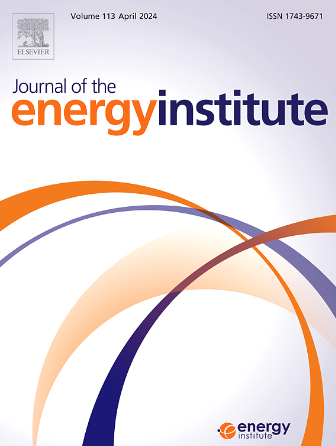Study on laminar combustion characteristics and the optimization of the coupling mechanism in a mixture of propanol and gasoline
IF 5.6
2区 工程技术
Q2 ENERGY & FUELS
引用次数: 0
Abstract
When both isopropanol and n-propanol are incorporated, the utilization of propanol as a fuel substitute (or a gasoline additive) presents promising potential for enhancing the combustion efficiency and thermal performance in compact, turbocharged, direct-injection gasoline engines upon blending. However, the complexity of the laminar combustion behavior of propanol-blended gasoline has yet to be fully investigated, as current coupling mechanisms are insufficiently sophisticated to precisely mirror the complex experimental conditions.
This study establishes a testbed specifically designed for measuring laminar burning velocity (LBV) using the heat flux method. This setup is employed to measure the LBV of pure n-heptane and isooctane, as well as the LBV of the gasoline surrogate fuel TRF with two distinct blend ratios. Additionally, it measures the LBV of propanol and its blends with TRF. The research findings reveal that isooctane demonstrates a heightened sensitivity to fuel preheating temperature, whereas the toluene proportion in TRF fuels exerts the most pronounced influence on combustion behavior. At an equivalence ratio of 1.1, the LBV of n-propanol differs from that of its isomer, isopropanol, by 4.65 cm/s. Notably, the LBV exhibits a discernible upward trend, corresponding to the increasing proportion of toluene in the blended fuel. Furthermore, there is a pronounced distinction in LBV among the propanol isomers, with blended TRF occupying an intermediate position between pure propanol and TRF. After the enhancement of the mechanism based on experimental benchmarks of LBV, a rigorous validation process demonstrated a substantial improvement in the alignment between simulated outcomes and empirical LBV measurements.
丙醇与汽油混合物层流燃烧特性及耦合机制优化研究
当异丙醇和正丙醇同时加入时,利用丙醇作为燃料替代品(或汽油添加剂)有望在混合后提高紧凑型涡轮增压直喷汽油发动机的燃烧效率和热性能。然而,丙醇混合汽油层燃行为的复杂性还有待充分研究,因为目前的耦合机制不够复杂,无法精确反映复杂的实验条件。该装置用于测量纯正庚烷和异辛烷的层燃速度,以及两种不同混合比的汽油代用燃料 TRF 的层燃速度。此外,它还测量了丙醇及其与 TRF 混合燃料的枸变值。研究结果表明,异辛烷对燃料预热温度的敏感性更高,而 TRF 燃料中甲苯的比例对燃烧行为的影响最为明显。当等效比为 1.1 时,正丙醇的惰性气体变速与异构体异丙醇的惰性气体变速相差 4.65 厘米/秒。值得注意的是,LBV 呈明显的上升趋势,与混合燃料中甲苯比例的增加相对应。此外,丙醇异构体之间的 LBV 有明显区别,混合 TRF 处于纯丙醇和 TRF 之间的中间位置。在根据枸杞多糖的实验基准对机理进行改进后,严格的验证过程表明模拟结果与经验枸杞多糖测量结果之间的一致性有了很大提高。
本文章由计算机程序翻译,如有差异,请以英文原文为准。
求助全文
约1分钟内获得全文
求助全文
来源期刊

Journal of The Energy Institute
工程技术-能源与燃料
CiteScore
10.60
自引率
5.30%
发文量
166
审稿时长
16 days
期刊介绍:
The Journal of the Energy Institute provides peer reviewed coverage of original high quality research on energy, engineering and technology.The coverage is broad and the main areas of interest include:
Combustion engineering and associated technologies; process heating; power generation; engines and propulsion; emissions and environmental pollution control; clean coal technologies; carbon abatement technologies
Emissions and environmental pollution control; safety and hazards;
Clean coal technologies; carbon abatement technologies, including carbon capture and storage, CCS;
Petroleum engineering and fuel quality, including storage and transport
Alternative energy sources; biomass utilisation and biomass conversion technologies; energy from waste, incineration and recycling
Energy conversion, energy recovery and energy efficiency; space heating, fuel cells, heat pumps and cooling systems
Energy storage
The journal''s coverage reflects changes in energy technology that result from the transition to more efficient energy production and end use together with reduced carbon emission.
 求助内容:
求助内容: 应助结果提醒方式:
应助结果提醒方式:


